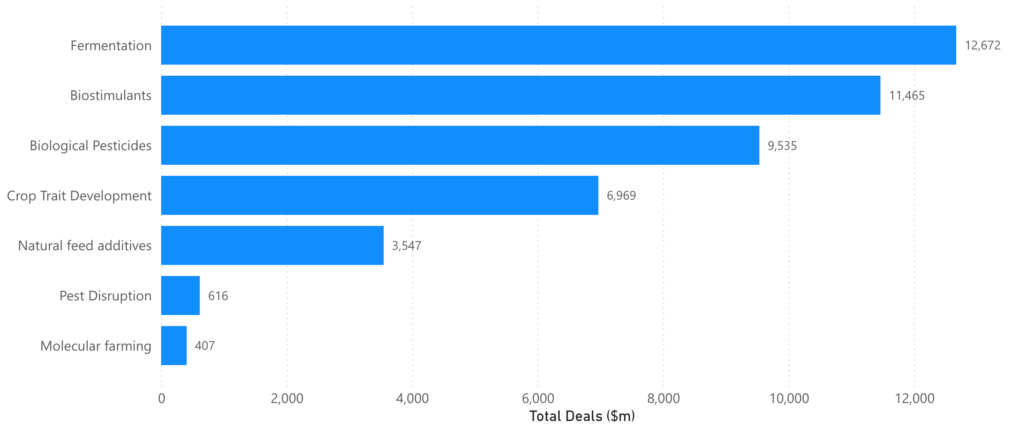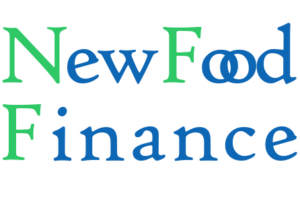Biotech is coming to food and ag
Chart of the Week – Cumulative Investment by Agri-Food Biotech Sector

By Jenna Chow
Biotech companies account for a third of all investment into start-ups in the sustainable food and ag sector, over the last decade, at $33 billion, showing how the agri-food sector can be disrupted by advances in one of the world’s fastest-moving technology themes.
Biotechnology takes biological resources, from microbes to plants and animals, and converts these into useful products from food to energy and materials.
Done right, biotech has the potential to replace non-renewable resources like chemicals based off oil and gas, and substitute these for renewable resources such as microbes fed with food waste, in a sustainable, circular economy.
At New Food Finance, our focus is investment in a green transition in food production. We have classified more than 3,200 companies according to more than 1,700 sectors, sub-sectors, markets and technologies that mitigate pollution, greenhouse gases or biodiversity loss.
Our data show seven ways in which biotech can disrupt food and ag, see our Chart of the Week above.
- Fermentation – taking microbes such as yeast or bacteria, and feeding them with waste sidestreams, to produce proteins. One goal is to produce an alternative to meat-based protein. An example is Air Protein, which has developed a renewables-powered, CO2-based microbe fermentation process.
- Biostimulants – using microbes such as nitrogen-fixing bacteria, to subsitute for chemical fertilisers. An example is Sound, which has developed a foliar-applied microbiome activator, that works with the microbes already in the soil, and the equipment already used, to give crops access to more nitrogen and phosphorus.
- Biological pesticides – producing microbes, viruses or isolated protein chains, which attack pests such as insects in a targeted way, and substitute for chemical pesticides. An example is SOLASTA Bio, which has developed insect control agents based on neuropeptides, that disrupt physiological function in target pest species, which it says leaves beneficial insects and vertebrates untouched.
- Crop trait development – using advances such as in gene editing, to alter staple crop DNA, to turn on or alter genes with the goal of making crops more pest or climate resilient. An example is Cibus, which says it has developed a proprietary family of non-transgenic, gene-editing technologies, with the goal of developing crop traits that enable farmers to have higher yields while reducing the use of chemicals and fertilizers.
- Natural feed additives – developing microbes or other biological extracts, which stimulate gut health, with the goal of reducing use of antibiotics in feed. An example is Fixed Phage, which produces bacteriophages, as a feed supplement or topical treatment in livestock and pets, to displace antibiotics and chemicals.
- Pest disruption – using natural pheromone-based molecules to disrupt mating behaviour, or else genetically engineering pests to impact breeding success. An example of sterile insect technology is Oxitec, which inserts a single self-limiting gene into male insects, which after mating with targeted wild-type female pests, pass on the gene, preventing female offspring from surviving.
- Molecular farming – using genetically engineered plants to produce animal proteins, to substitute for traditional livestock production. An example is the start-up Lovely Foods, which says it aims to produce dairy proteins in soy plants.
